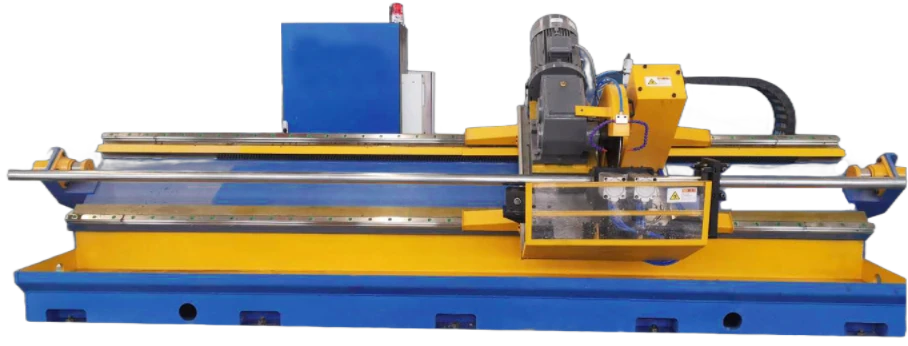pipeline welding gear
The Essential Guide to Pipeline Welding Gear
Pipeline welding is a crucial aspect of the construction and maintenance of various industries, including oil, gas, and water supply. The integrity and safety of these pipelines rely heavily on the quality of welding performed. Therefore, investing in the right welding gear is essential for any pipeline welder. This article provides an overview of the fundamental components of pipeline welding gear, ensuring you are well-prepared for your next project.
1. Welding Machines
At the heart of any pipeline welding operation is the welding machine. There are various types of welding processes, such as MIG (Metal Inert Gas), TIG (Tungsten Inert Gas), and stick welding. For pipeline welding, SMAW (Shielded Metal Arc Welding) and GTAW (Gas Tungsten Arc Welding) are preferred due to their versatility and effectiveness on thicker materials.
When selecting a welding machine, consider factors such as portability, power output, and the type of materials you will be working with. A good pipeline welder should be able to adapt their equipment to different situations, whether it involves overhead, horizontal, or pipe welding.
2. Protective Gear
Safety is paramount in welding, and protective gear is a welder's first line of defense against harmful elements. The essential protective equipment includes
- Welding Helmet A high-quality helmet with an auto-darkening lens provides protection against UV rays and sparks, while allowing the welder to see their workspace clearly before and after striking an arc. - Gloves Welding gloves should be made from durable, heat-resistant materials to provide protection from burns and cuts. They should offer flexibility for better handling of welding rods and workpieces. - Protective Clothing Flame-resistant coveralls and jackets help shield the skin from burns and spatter. Additionally, wearing long sleeves and heavy-duty boots protects against accidental spills and impacts.
- Respiratory Protection In some environments, welders may be exposed to harmful fumes and gases. A high-quality respirator or fume extractor can mitigate these risks, ensuring healthier working conditions.
3. Welding Filler Metals
The selection of filler metals plays a significant role in the quality of the weld. For pipeline welding, it's crucial to match the filler metal to the base material to ensure compatibility and strength. Common options include
pipeline welding gear

- E7018 Electrodes These low-hydrogen rods are renowned for their excellent weldability and are often used for structural applications
.- ER70S-6 Filler Wire This MIG wire is ideal for various carbon steels and excels in delivering strong, ductile welds.
Understanding the right materials for your specific application will lead to improved welding efficiency and durability.
4. Welding Accessories
Having the right accessories can streamline the welding process. Essential accessories include
- Welding clamps and magnets These tools hold workpieces in place, allowing for precision and reducing the likelihood of misalignment. - Welding carts A sturdy cart can simplify the transportation of equipment around the job site and provide a compact storage solution.
- Welding rods holder Keeping welding rods organized and easily accessible minimizes downtime and enhances workflow efficiency.
5. Inspection and Testing Equipment
To ensure the quality of your welds, implementing a thorough inspection process is critical. Tools such as ultrasonic testers and X-ray machines help in identifying defects and ensuring that pipeline integrity meets regulatory standards. Regular inspection not only improves safety but also extends the lifespan of the pipeline.
Conclusion
Investing in quality pipeline welding gear is vital for achieving sturdy and reliable welds. By carefully selecting the appropriate welding machines, protective gear, filler metals, and accessories, a pipeline welder can significantly enhance their skills and safety on the job. Moreover, understanding the importance of regular inspection and maintenance can help prevent costly repairs and ensure the longevity of pipeline systems. Whether you are an experienced welder or just starting in the field, having the right gear is the foundation of a successful pipeline welding career.
-
High Frequency Straight Seam Welded Pipe Production Line-BzZhou Xinghua Machinery Equipment Manufacturing Co., LTD.|Precision Welding, High EfficiencyNewsJul.30,2025
-
High Frequency Straight Seam Welded Pipe Production Line|BzZhou Xinghua|Precision Welding&EfficiencyNewsJul.30,2025
-
High Frequency Straight Seam Welded Pipe Production Line - BzZhou Xinghua|Precision Engineering&EfficiencyNewsJul.30,2025
-
High-Frequency Straight Seam Welded Pipe Production Line-BzZhou Xinghua Machinery Equipment Manufacturing Co., LTD.NewsJul.30,2025
-
High-Frequency Straight Seam Welded Pipe Production Line-BzZhou Xinghua Machinery Equipment Manufacturing Co., LTD.|Precision Manufacturing, High EfficiencyNewsJul.30,2025
-
High Frequency Straight Seam Welded Pipe Production Line-BzZhou Xinghua Machinery Equipment Manufacturing Co., LTD.|Precision Steel Pipe Manufacturing&Industrial EfficiencyNewsJul.29,2025


